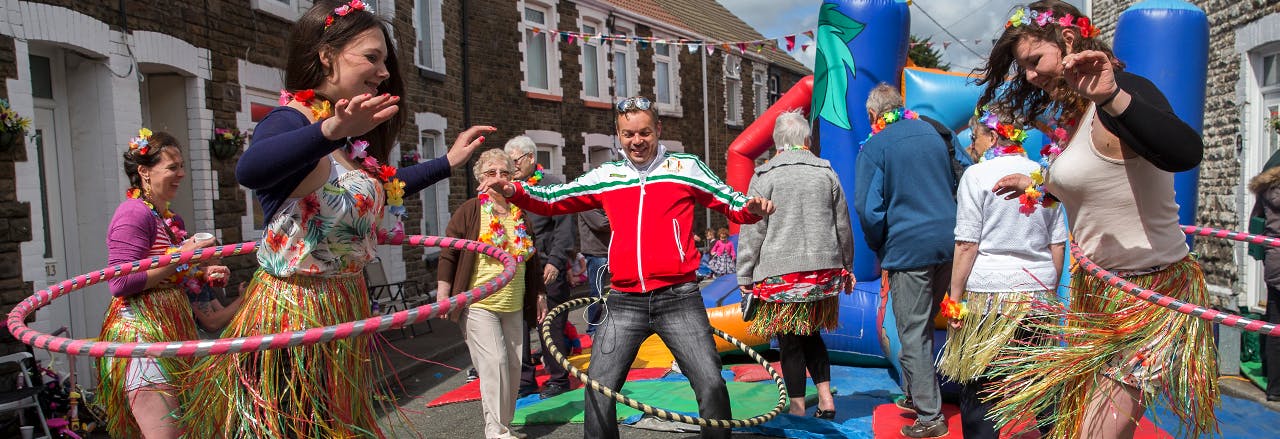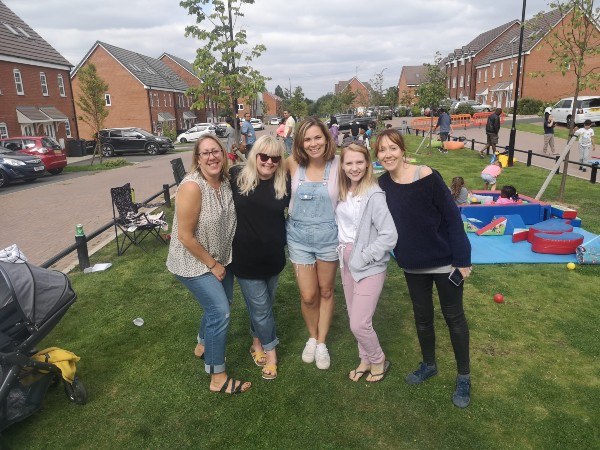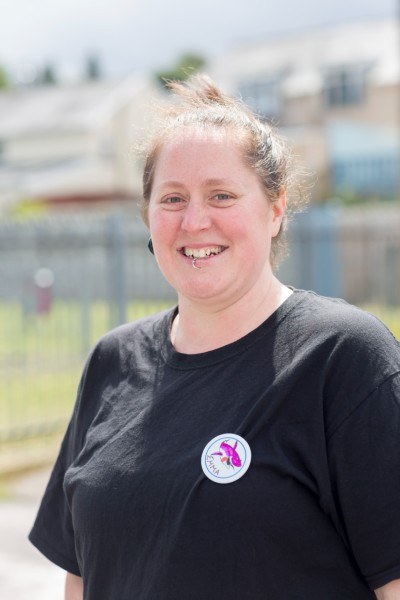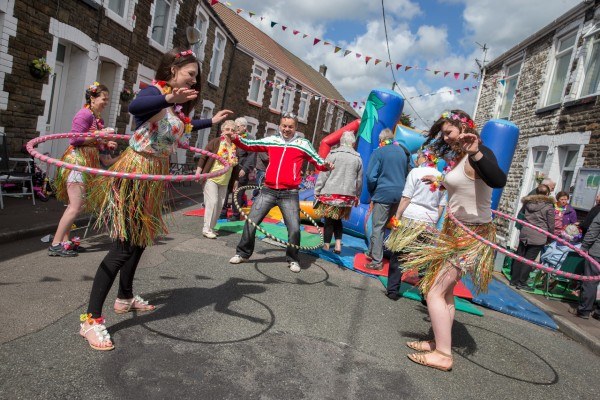
More than just a lunch: The Big Lunch
The Big Lunch is the UK’s largest annual celebration for neighbours and community. Each June, it brings together as many as 9 million people for a moment of cheer and connection. The idea is simple - people connect over sandwiches in front gardens, share cake at traditional street parties, and come together to create new connections, have fun, and celebrate community.
But that’s just the start. The Big Lunch goes beyond parties and bunting, explains Peter Stewart, Board Director of Eden Project, which conceived the idea. “We sell it as a good time, but actually the social outcomes are the reason we’re behind it so much.”
These outcomes include stronger social networks, illustrated by the 18 million new friendships the Big Lunches have helped to forge. They’ve given people a more positive view of their neighbourhoods; four-in-five participants feel a stronger sense of community pride and belonging as a result of taking part. And people follow up on that feeling - the events have raised over £50 million for community causes and two-thirds of former participants go onto improve their neighbourhood.
In this case study, we look at how something as small as tea and cake can help to improve where you live and build local skills, resources and friendships. We also hear the stories of Claire Johnson and Emma Knight, two community organisers whose experiences show how street parties can be a first step to a sense of community, restoring trust and confidence.
The Big Lunch in numbers
Mass participation
Since 2009, The Big Lunch has supported over 1 million community celebrations across the UK, with a record breaking 216,315 Big Lunches in 2021 alone.
Over the past four years, an average of 7 million people have taken part.
In 2021, 9 million came together to build community spirit and celebrate what’s great about where they live.
In 2012, the Diamond Jubilee saw a jump in participation, up to 8.5 million from 2.4 million in 2011. There are already signs of another big increase for 2022’s Platinum Jubilee.
In an average year, Eden expect 7,500 requests for Big Lunch packs. By May 2022, they had received 80,000 requests.
Month of Community participants
In 2021, Big Lunch founded the Month of Community, inviting partners such as Volunteers’ Week, Carers Week, Loneliness Awareness Week, and Refugee Week to work together under this banner. Over 15 million people took part in an activity in this month.
Who takes part?
Big Lunches are particularly popular with young men: 62% of participants are male, with 85% under the age of 45.
Events bring together people from different backgrounds, and with different experiences. Though it varies year on year, 11-20% of participants are disabled. 11% of participants are Asian (compared to 7% of the UK population), and 6% are Black (compared to 3%).
In 2021, 27% of information requests came for events in the most deprived quintile in the UK and a further 22% in the second most deprived communities. Around four-fifths take place in cities.
The event is popular across the political spectrum, with 27% of participants saying they vote for Conservative and 31% for Labour.
Belonging and local pride
Independent research shows that the initiative helps to build a stronger sense of community:
- 79% of surveyed attendees believe The Big Lunch is a good way to bring people with different views and outlooks on life together.
- 78% say The Big Lunch made them feel like they belong more in their community.
- 77% feel closer to their neighbours and 76% feel greater pride in where they live.
- 76% say they feel a stronger sense of community.
Community organising and grassroots activity
In neighbourhoods that regularly hold Big Lunches, 68% say people have come together to improve the neighbourhood as a result.
65% go on to take part in other community activities with people they met at The Big Lunch event.
46% start up new local initiatives and neighbourhood groups.
42% say The Big Lunch benefited the community “a great deal”, followed by 27% saying “a lot” or 18% “a moderate amount.”
Economic impact
The Big Lunches have raised a total of £50,680,000 for their communities between 2016 and 2021, by fundraising at the events and attracting further funding. This amounts to an average of £8 million per year.
More than 75% of the money stays in the neighbourhood to support grassroots initiatives and charities.
Wellbeing outcomes
76% of Big Lunch attendees made new friends – that’s over 18 million new friendships over the past four years.
76% said the event made them feel less lonely.
81% of attendees said Big Lunch was fun, and 74% and 80% said it helps to bring different generations and people from different ethnic backgrounds together, respectively.
Why connected communities matter
Feeling better about your community is good in itself – but we know it has other benefits. Research suggests that better social integration is associated with increased life expectancy, quicker recovery from health problems, and better mental health. The creation of stronger community ties has been linked to the prevention of depression, especially among children. And social support networks seem to reduce the impact of vulnerable life situations, such as long-term illness.
Yet those connections can fade. Surveys suggest that levels of social trust have fallen in the UK – from around 60% in 1959 to 30% in 2005. And research shows that lower trust correlates with lower levels of community wellbeing and health.
For Lindsey Brummitt, who directs Eden Project Communities, The Big Lunch is “in that preventative space,” helping to (re)build those foundations for communities to thrive. “You can’t say it solves knife crime, but if you know one another better and are looking out for one other, it’s less likely for some of those difficult things that happen in society to take hold.”
Being involved in The Big Lunch has meant that we have a community. We didn’t have one before.Claire Johnson, community organiser
Reaching out

For Claire Johnson, who moved into a new-built estate in Birmingham, community spirit had to be created from scratch. “I just didn’t know anybody in this area,” she says. “As more houses started to pop up, and I saw more kids around the area, I realised I had no idea where they were from,” she remembers. “Are they on the estate? Do people meet?”
Searching online for ways to connect, she discovered The Big Lunch. “I sat and handwrote a hundred invitations.” 50 people turned up to her first “bring and share” Big Lunch, held on the strip of grass in the middle of the estate. Everybody was looking for the same thing: they wanted to get to know their neighbours, but hadn’t known where to start.
That first lunch has led to mums’ and dads’ groups for parenting support, regular collections for a food bank, and a Neighbourhood Watch group. “Looking at security was one of the first things that came out of our first Big Lunch,” Claire says. “Lighting [on the estate] was really bad, because they were still building. But it was really nice to feel connected to other people on the estate.” She was able to arrange an estate discount for camera doorbells – and after a local robbery, sharing camera footage with the police meant the perpetrators were caught.
For Claire, the biggest change is in the feel of the estate. “Being involved in The Big Lunch has meant that we have a community. We didn’t have one before.” The estate’s Facebook group has 300 members, with a spinoff group for people living in flats, and a community WhatsApp group that residents use to share ideas and equipment.
And the whole atmosphere has changed. “When the weather’s nice, we just take the kids down to the green, this strip of grass, and there’s always somebody down there. And you know who they are. I look forward to going down on the green as much as the kids do, because I get to chat to others.”
Rebuilding community spirit

In 2009, Emma Knight started holding an annual Big Lunch on her street in Neath, south Wales. “There were a lot of trust issues here,” she remembers. “We were in a deprived area, with a really high fear of crime.”
It hadn’t always been that way: one long-term resident remembered the “amazing community spirit” when she was growing up in the street in the 1940s and 1950s. “Later on, it all fell apart – there were a lot of drug problems, a lot of alcoholism, in the local area,” Emma explains. “People just shut their doors and stepped away.”
Neighbours were reluctant to speak to each other, and at first they were wary of Emma as a newcomer – even though her mother-in-law had lived in the street for most of her life. But regular street parties, which Emma organised with her neighbours with Big Lunch support, helped to change that.
“I think it’s literally just that you know who the people are,” Emma says. “It’s on the doorstep. Even if you’re not really mobile, all you have to do is open that front door. You see the people, you know that they’re your neighbours.” Over time, people started to recognise families and friends, too. “If there’s somebody who isn’t connected to a household in the street, you’d know, you’d make a phone call – do you know that somebody’s just walked into your house?”
As they got to know each other, neighbours were readier to ask for help. “I think that’s a key thing,” Emma says. “Before they felt alone, and if they had a problem, they had to deal with it on their own. Now there’s a big network of people.”
That’s something her older neighbour recognised, too. “By the time she passed away, she said she felt it was like it was when she was younger,” Emma remembers. “That was lovely to hear.”
From a street party to a community hub

Emma and her neighbours loved the way The Big Lunch gave them a reason to hold regular parties. “We picked a theme each year, and ran with it. However our finances have looked, we’ve splashed out or not splashed out. It turned into multiple parties every year – everything snowballs.”
And as it grew, the group of neighbours turned into a community group. Since the street was hosting at least one event a month, they hired a storage container to hold the equipment, including tables and a marquee. Two years after the first event, the street’s children launched their own group for youth events, from ice skating trips to creating their own pantomime and circus performances. The group started to hire venues for more ambitious events. Then, when the local community centre increased its prices, they decided to develop their own.
They took on a former pensioners’ association building, reopening as a new community centre. “It was financially sustainable within six months,” says Emma. “It’s been thriving ever since.” Since the pandemic, the centre has shifted its focus to food and climate change work, including a club distributing surplus food and a pay-as-you-feel café. They now plan to take over and renovate a derelict former youth club, so that they can offer more for teenagers.
Thinking big does make a difference. Emma acknowledges that the community centre has “taken it away from the doorstep, which we’d really loved at the start.” But it’s connected her group with the wider community. “Generations have come together, which is lovely. We’ve got volunteers from age four to age 94. It’s right across the board.”
Making it easy
The Big Lunch offers an easy way to begin, without pressure or obligations. “The bigness comes from that idea of being 100% inclusive,” says Peter. “Wanting everybody to participate, wherever you are.” That might mean a street party – particularly in Jubilee year – but it doesn’t have to be. “Just two or three people, pulling up a chair at the last minute – you are included in that moment,” Peter adds.
For Eden’s Lindsey Brummitt, the flexibility of The Big Lunch is key. “We haven’t put parameters around it. We’ve left it really open, and that means people can make it whatever works for them.” Because you can adjust it to suit your own needs and interests, it’s become “a very inclusive space that helps build bridges in ways that we never thought possible.”
Peter compares it to what happens after a heavy snowfall. Disruption gives people a reason to speak to each other, to help each other out – as we saw on a much larger scale during COVID-19. The Big Lunch offers a positive reason to reach out: what Lindsey calls “the idea you can build social capital without a crisis to kickstart it.”
With those connections in place, “people are better able to cope with what’s coming, whether that’s social change, a global pandemic, climate change. For us, we know that most people’s experience of some of these big, scary issues is actually local.” And it’s on a local level that they can take action.
The magic happens when you meet other people like you, who are facing the same challenges, or have got something off the ground that you’ve been thinking about.Lindsey Brummitt, Programme Director, Eden Project Communities
Beyond the street party: upskilling organisers to do more in their communities
We know that a Big Lunch can give people an appetite to do more in their communities. “A lot of people were coming back to us, to say, ‘What can I do now?’” Lindsey explains. “How do we help build people’s skills and confidence, to do what matters to them, where they live?”
That drive and aspiration to do even more is backed by statistics. For example, in 2020, people who help to organise a Big Lunch reported feeling more inspired (77%), able (82%) and confident (82%) about getting involved in their community.
In response, Eden Project Communities developed its Community Camps, learning groups for people wishing to do even more to help their neighbours. So far, they’ve run 27 Camps, with 1,639 community organisers learning project management, funding, finance, and event coordination skills.
Run online and face to face, the camps are designed to be accessible, and easy to attend. Travel costs are covered for the in-person camps, while organisers like Claire have found the online version more convenient: “It used to be a weekend in Devon, and with the best will in the world, with three children that just wouldn’t happen. During Covid, they did one evening a week over five weeks – that was amazing.”
Whether online or in person, peer to peer learning is the essential ingredient. “We put together a programme with tours and talks and workshops, across the whole spectrum of community activities,” Lindsey says. “But the magic happens when you meet other people like you, who are facing the same challenges, or have got something off the ground that you’ve been thinking about.”
“It just fills you full of energy, ready to go again,” Emma agrees. “They supply us with ideas. You see what people are doing, right across the country, or further in some cases. There’s always somebody there who’s done it, or is thinking about it, that you can contact.”
If I need support with something, the network is there. The same as people use us in the local community, we use Eden.Emma Knight, community organiser
Lasting support, long-term impact
The Community Camps help people to turn their ideas into reality. A six-month follow-up found that 91% of camp participants went on to do more in their communities, leading to more than a thousand new initiatives. On average, these initiatives reached 237 people, thereby indirectly benefitting 369,000 people across the UK. For organisers, it’s had a lasting impact: six months on, 76% retained confidence in key skill areas like community engagement, funding, and finance.
To keep the momentum going, Eden Project has also established a network for community organisers, providing ongoing opportunities to connect and learn from one another. 6,000 organisers have attended over 290 events since 2018, with nine out of ten feeling more inspired or connected as a result. On average, each member gains nine new relationships with likeminded people.
“If I need support with something, the network is there,” Emma explains. And she draws an important parallel: “The same as people use us in the local community, we use Eden.”
What happens next is up to the communities themselves, as they follow their own interests and priorities. Behind those impressive reach and impact numbers are heart-warming stories of changed communities, like those of Emma and Claire. Some go on to build new support networks, like the Cardiff woman who became a carer for one of her neighbours. Others work to develop their local area, like the Belfast street party who turned an alleyway into a shared community garden.
For Lindsey, it’s about supporting people with “that slow, steady build of ideas, of confidence, of skills, that enable them to go and make positive things happen.” It’s a lunch that can lead to greater things, for communities across the UK.
Links
The National Lottery Community Fund has supported The Big Lunch with more than £19.4 million since 2011, with a new grant of £2,396,998 for 2022-2024.
Find out more about Eden Project Communities and The Big Lunch, or follow them on Twitter, Facebook or Instagram.
Sources
Data comes from the Eden Project and evaluations they’ve commissioned from independent research organisation, as summarised in their 2021 Four Year Review and their internal communication with us. Other information comes from Zoë Anderson’s interviews with Lindsey Brummitt, Claire Johnson, Emma Knight, and Peter Stewart.